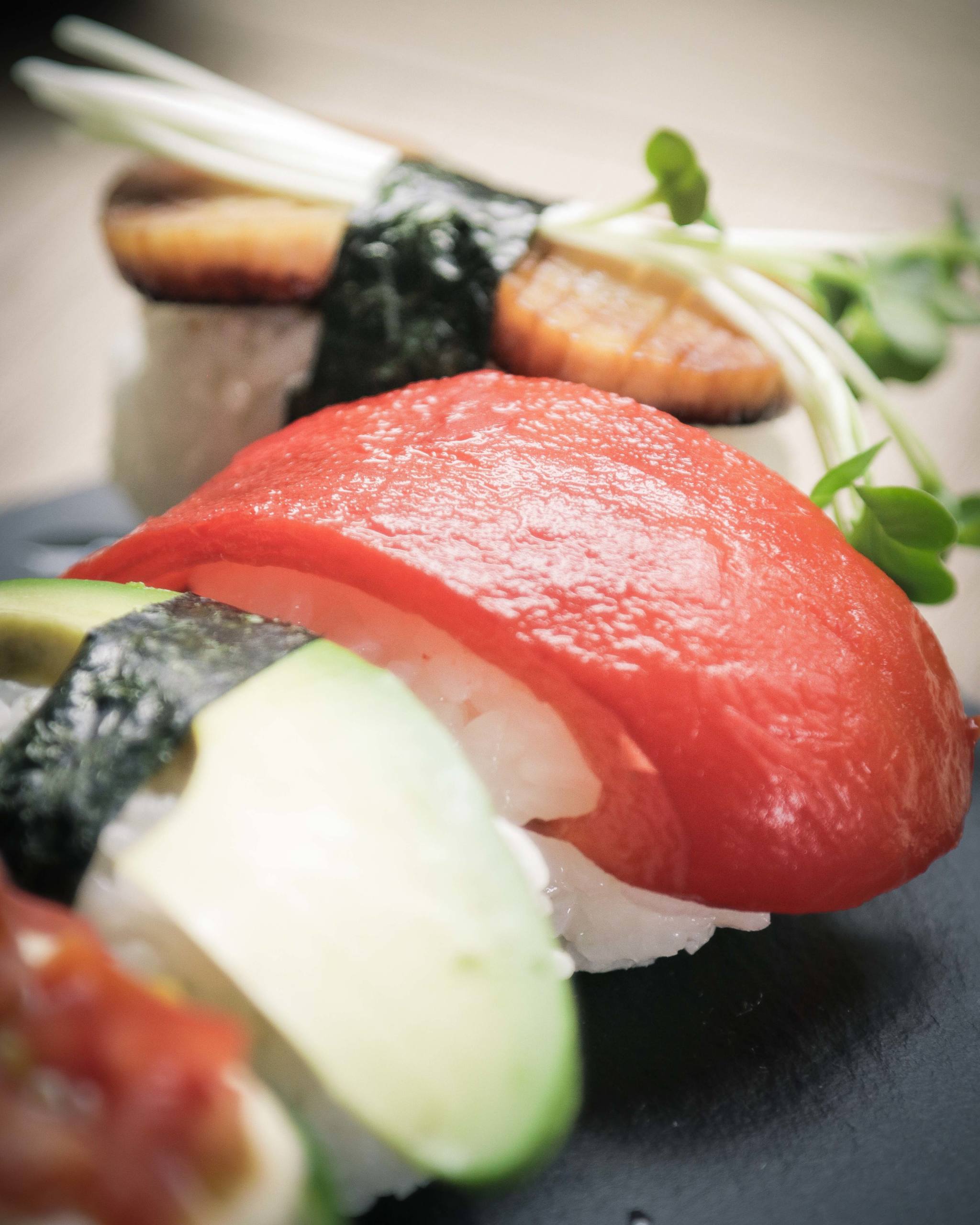
Bentoya ♡ Nigiri Sushi
View this post on Instagram A post shared by Vegan Japanese Cooking Class (@bentoyacooking)
by Benoit
In Western countries, most products including meat and dairy substitutes such as soy protein, soy and nuts milk, etc. are designed for vegetarians and vegans, and promoted as such, with clear vegetarian and vegan labels. However, since I came back in Tokyo in 2018, I have been struck by the fact that this is not the case in Japan. Indeed, most products with meat and dairy substitutes do not target vegetarians and vegans, but mainly consumers who care about their health and beauty. See for instance these examples of almond milk, soy milk yoghurt and soy bean snack (translation follows each picture; note that the word “kirei” means “beautiful” and/or “clean” depending on the context):

“Almond milk is delicious and has a great nutrition.
It provides your daily intake of Vitamin E and a lot of dietary fibers and calcium.
So that Japanese women stay beautiful/clean forever.”
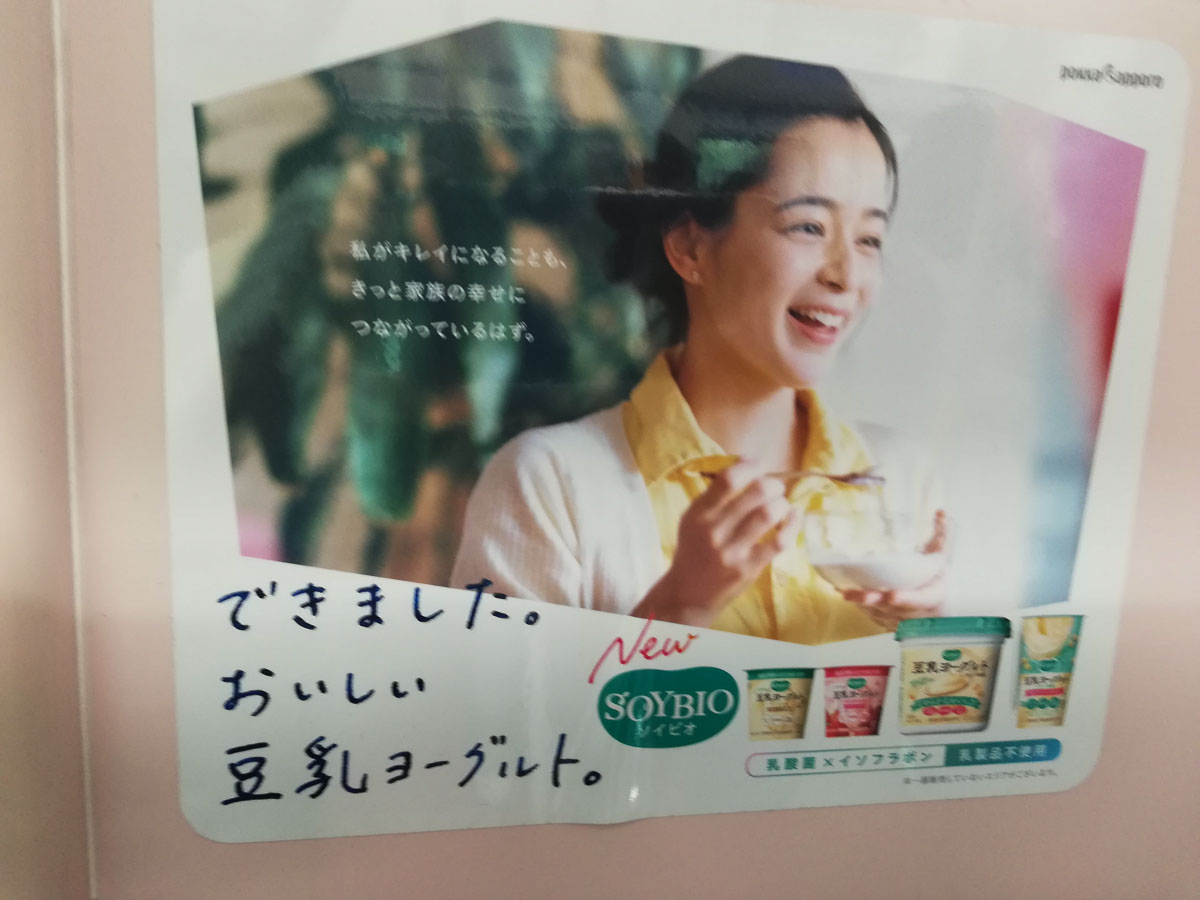
“The fact that I become beautiful/clean also should contribute to make my family happy.
We made it, delicious soy milk yoghurt.”
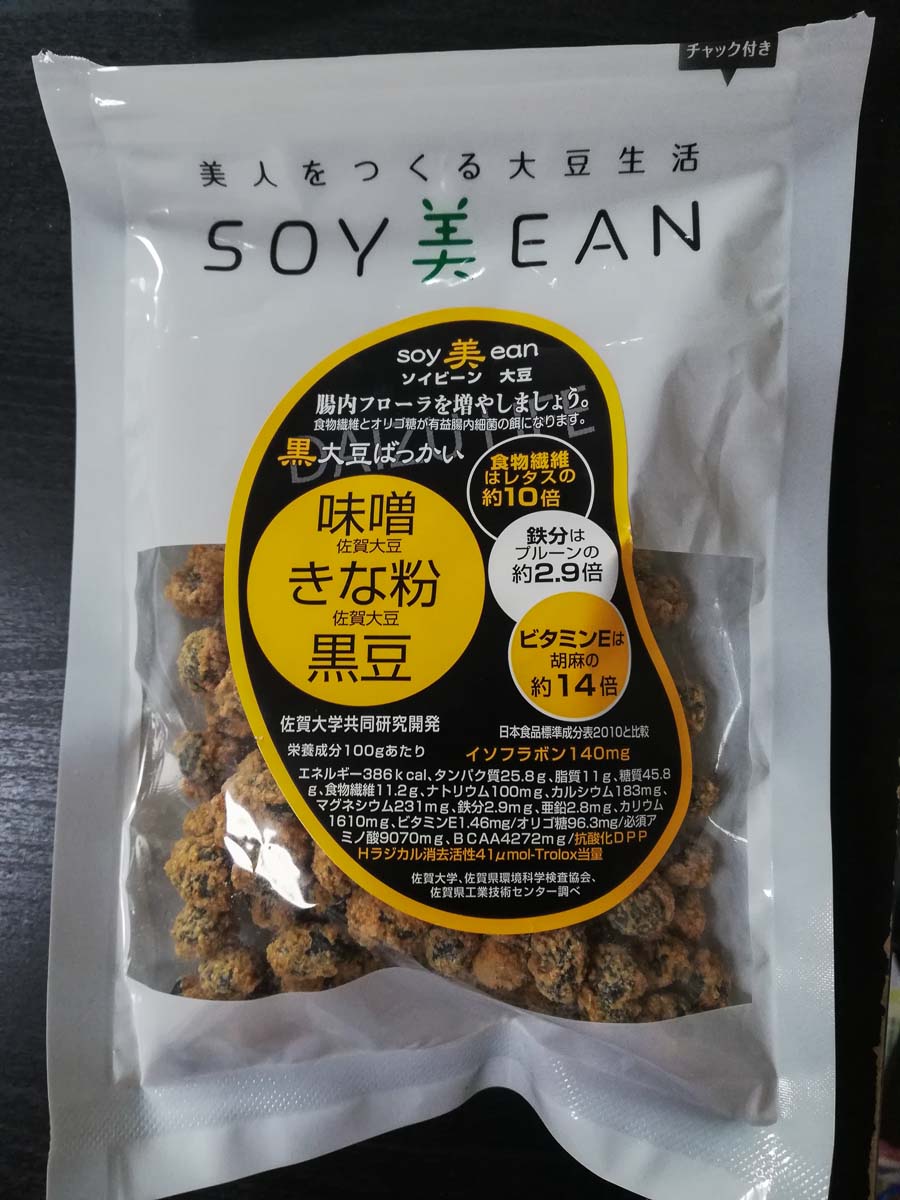
The name of this product uses the kanji 美 which mean “beautiful” and reads as “bi”: the product’s name therefore reads as “soy bean”. It is preceded by the formula “the soy bean lifestyle which makes beautiful women”.
On the one hand, this concern for health and beauty is great because it leads to the development of many vegan products in a country with extremely few vegans, even if most of these products are rarely labeled as « vegan ». See for instance the three aforementioned products, and these two pieces of soy cheese:
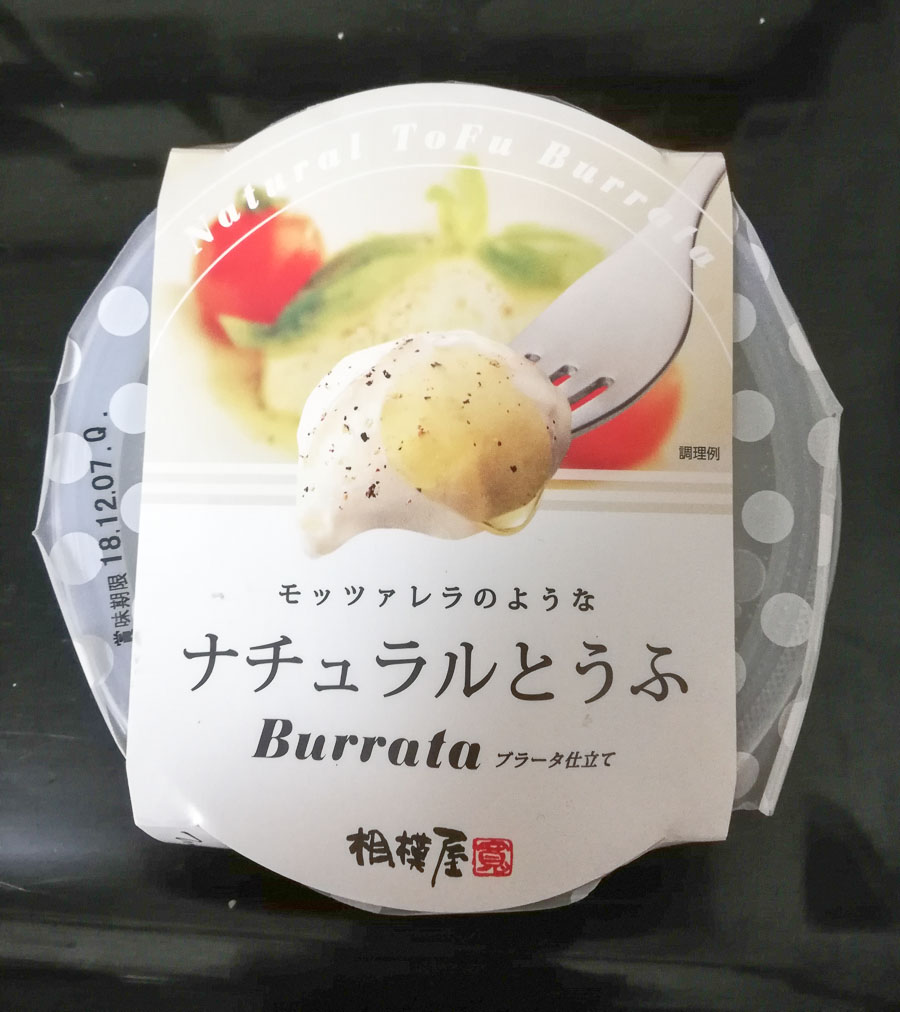
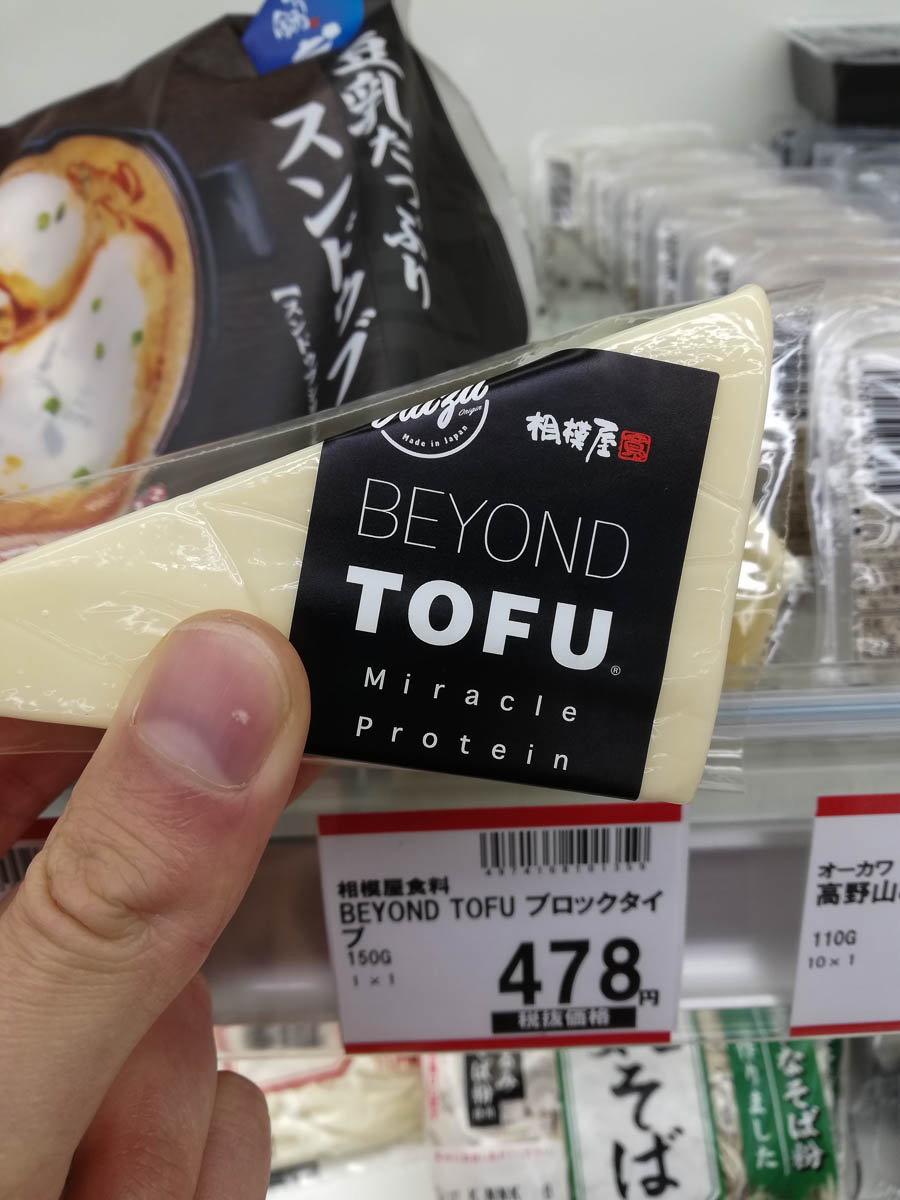
On the other hand, and this is highly problematic, many of the products with meat and dairy substitutes are actually not vegan. For instance, a dumpling restaurant I went to offers a “Meat not using menu” with soy meat dumplings which contains chicken broth (without writing it in the menu!) and in some cases fish roe and mayonnaise (written in the menu):
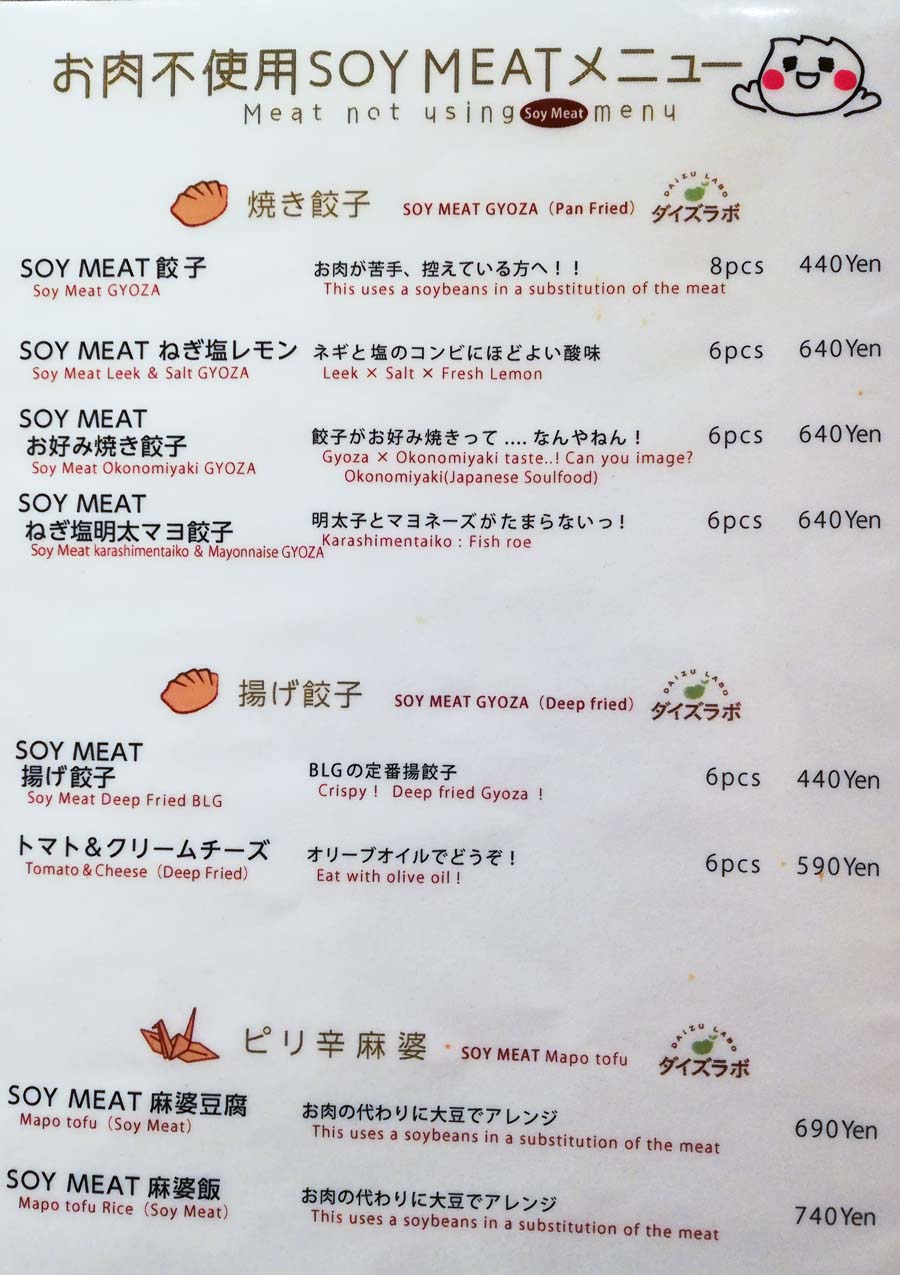
Similarly, many nuts-based milks include powdered cow milk. It is also usual that cakes and donuts presented as being delicious and healthy because they contain soy milk and tofu also contain cow milk and eggs. See for instance this chocolate snack packaging which claims a “gentle sweetness” and the taste of soy milk and roasted soybean (kinako), but which contains cow milk and eggs.
Pic 7 – chocolate snack with soymilk and kinako (product name: “Galbo Soymilk and Kinako”)
This might, at first sight, seem contradictory, but actually it is not since these products are not meant to be bought and eaten by vegans, but by people who just want to reduce their consumption of meat and dairy, and/or to enjoy the benefits of soy products (health, taste, texture, etc.).
This, and the small use of labels, is all the more problematic that even if there are no animal-derived elements in the list of ingredients, very often animal and fish parts are used during the confection process, and even included in small quantity in the final product. This applies to virtually all rice balls (onigiri) sold in convenience stores and supermarkets, which contains fish stock while it is not included in the list of ingredients.
So, in conclusion, enjoy Japanese delicious soy-based alternatives to meat and dairy, but be careful!

View this post on Instagram A post shared by Vegan Japanese Cooking Class (@bentoyacooking)
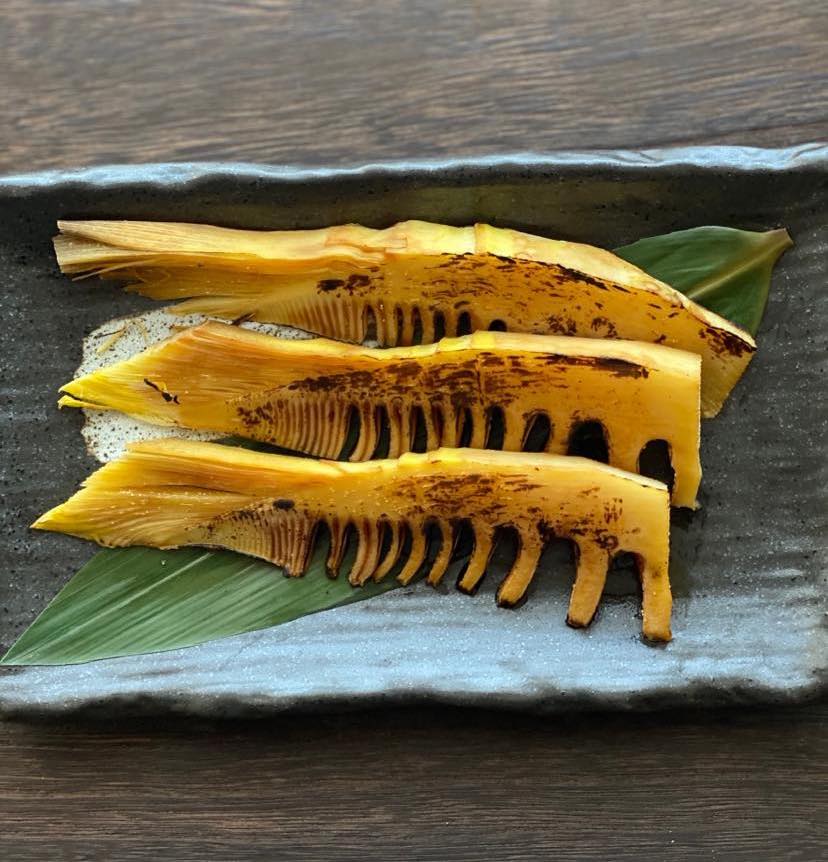
In Japan, the vegetable and fruit selection changes with the seasons. Seasonal vegetables are often budget-friendly and a great way to add variation to your cooking.
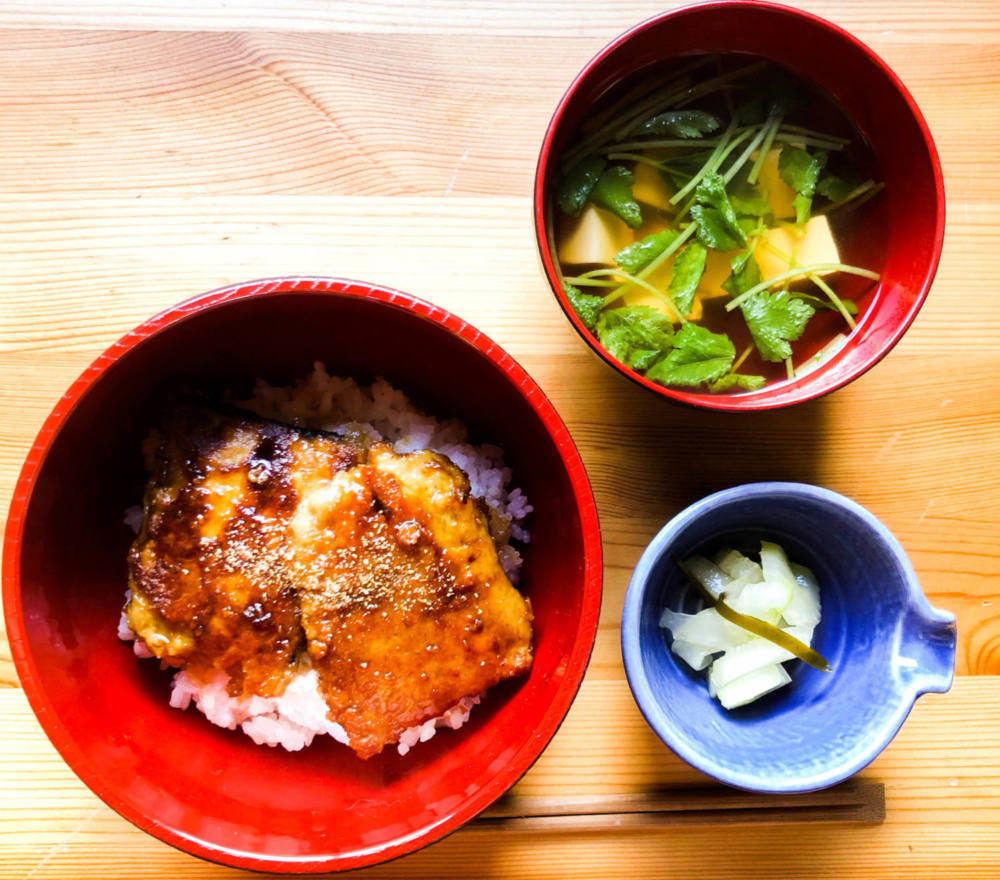
Modoki ryori refers to food which uses plant-based ingredients to mimic the appearance, taste and texture of meat dishes. This type of dishes are common in shojin ryori and they have also achieved a certain mainstream popularity due to the health factor of eating vegetable-rich meals.
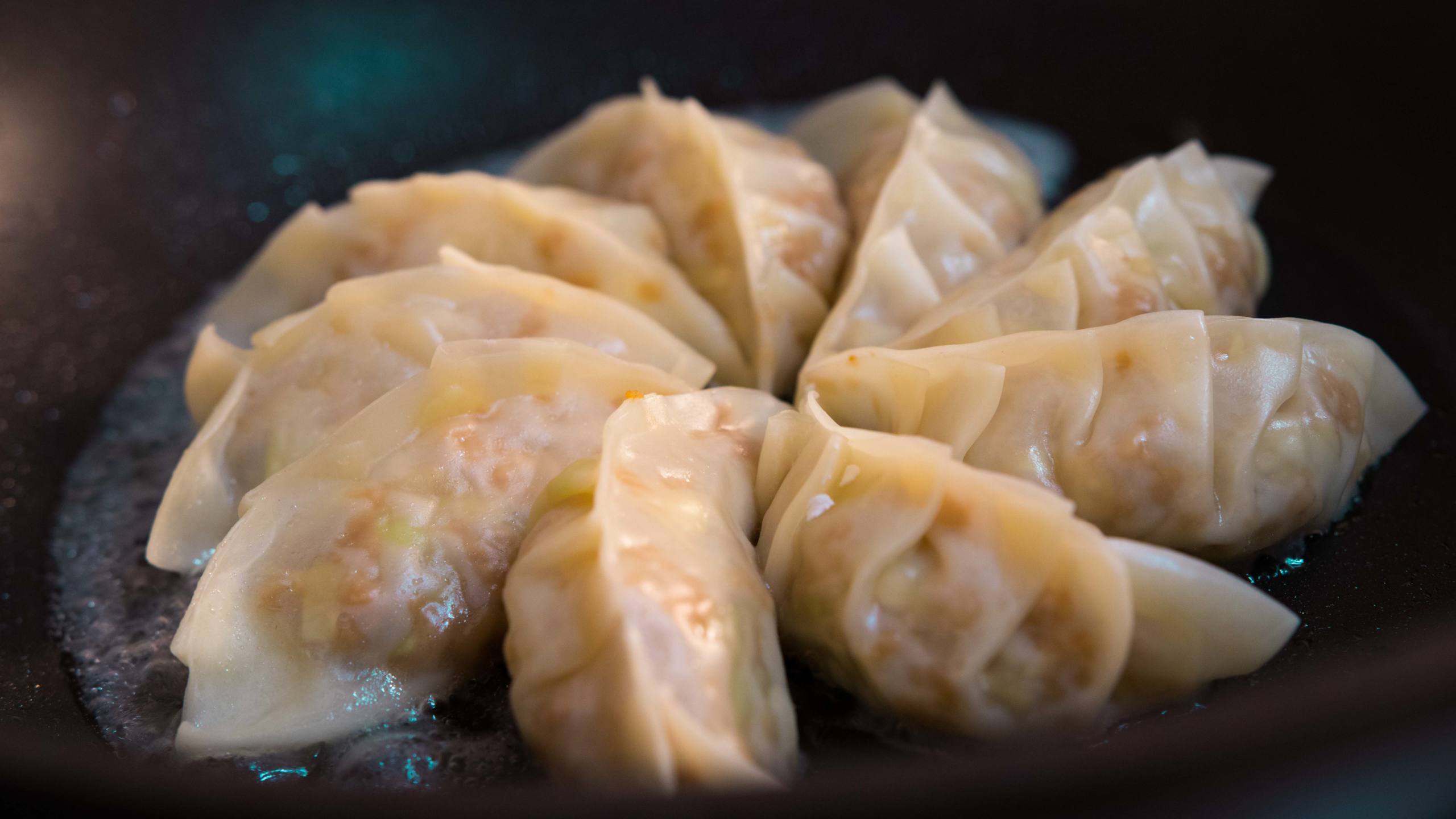
Chuka ryori (中華料理) refers to Japanese-Chinese dishes which originate from China, but have been adjusted to fit the style and taste of the Japanese palette. Dishes that belong to this group are for example ramen, gyoza and harumaki.
Sign up to our newsletter and get our latest recipes, cooking related content & offers delivered right to your mailbox!